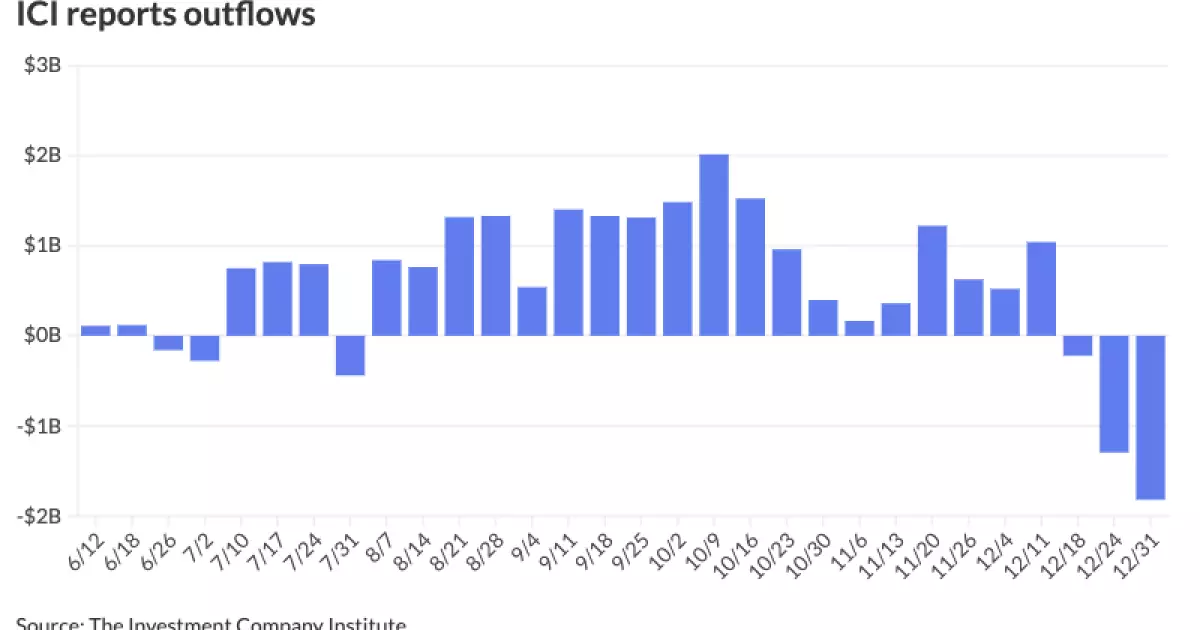On a turbulent Wednesday, the municipal bond market witnessed a notable sell-off, particularly across longer maturities. This shift occurred as market participants reacted to recent U.S. Treasury (UST) developments and insights from the latest Federal Reserve meeting minutes. While municipal yields rose by as much as 12 basis points, a trend echoed throughout various points on the yield curve, it seems the market is starting to recalibrate in relation to the prevailing economic environment.
The Federal Reserve’s latest hints towards a slow and cautious approach to interest rate cuts played a vital role in shaping investor sentiment. The speculation surrounding a more measured rate reduction strategy has begun to influence market dynamics, especially for municipal bonds, which are often seen as a seemingly safer investment alternative amid rate fluctuations. A particular focus should be placed on the ratios between municipal bonds and USTs—indicators reflecting relative value, where the two-year municipal to UST ratio settled at 65%, the five-year also at 65%, a 10-year ratio at 66%, and a relatively higher 81% yield for the 30-year bonds.
Recent minutes from the Federal Open Market Committee’s December meeting spotlighted significant hesitance among policymakers. Statements suggested that participants perceived the economy as nearing a pivotal point where easing policy growth should become more restrained. The ongoing discussion around inflation rates, consumer behavior, and labor market conditions indicates an underlying concern that has motivated this carefully thought-out stance. BMO’s senior economist, Sal Guatieri, emphasized that these discussions seem to solidify expectations of a rate pause in January.
The Fed’s subdued stance could have far-reaching effects on investments, particularly in the bond market, as mentioned by Byron Anderson, the Fixed Income head at Laffer Tengler Investments. The prevailing feeling among market participants is a growing lack of confidence in both the Fed and Treasury, contributing to a somewhat chaotic environment. The need for clarity is critical as the market braces itself for record auctions in the upcoming years, highlighting a staggering amount of $14.6 trillion due over the next two years. Such dynamics are essential to understand for any investor keeping an eye on both short-term strategies and long-term commitments.
With the current climate presenting a convoluted mixture of risks and rewards, analysts are advising caution. Cooper Howard from Charles Schwab pointed out that although the current yields relative to Treasuries may be low, the absolute yield perspective remains appealing, especially when tax implications are factored in. However, the market must also be wary of performance shifts, particularly as tighter spreads for lower-rated issuers may create potential challenges moving into 2025.
Investors are advised to watch for the evolving landscape of the municipal market closely. As noted in recent trading activities, long-term yields have already surged by 40 basis points in the last month alone, which could signify a turning point for performance potential. Rising yields often indicate an increase in term premiums, a situation previously uncommon in a market accustomed to steady returns.
The negotiating and competitive markets have felt the sting of these adjustments as well. For instance, RBC Capital Markets’ pricing of the San Diego Community College District bonds revealed only minimal yield changes. Meanwhile, for the University of Texas System’s revenue financing bonds, activity indicated that investors are still willing to remain engaged, despite creeping concerns regarding future inflation and Fed policies.
As municipal bonds continue to trade in this unpredictable environment, it becomes apparent that market players must stay astute. With auction results and yield adjustments showing signs of volatility—like the recent slippage in Treasury auctions—it is vital for potential investors to consider both immediate and longer-term outlooks carefully.
In the broader context, the municipal market is at a crossroads, reflecting a delicate balance between yield attractiveness and the underlying pressures from macroeconomic factors. As the Federal Reserve signals a cautious approach to its policy decisions, investors must navigate these waters with a keen eye on the evolving economic indicators and their implications.
The municipal bond space may be relatively insulated compared to other market sectors, but the performance metrics in this niche will undoubtedly depend on Fed moves and broader economic trends. With record auctions looming and potential market shifts on the horizon, now more than ever, the astute analysis of market conditions is essential for achieving optimal investment outcomes. Therefore, individuals involved in this segment of the bond market should remain informed and adaptable in their strategies as they respond to the prevailing economic climate.

